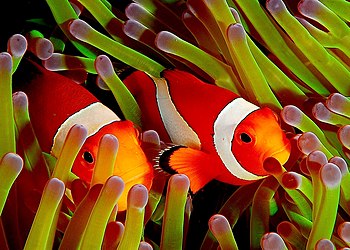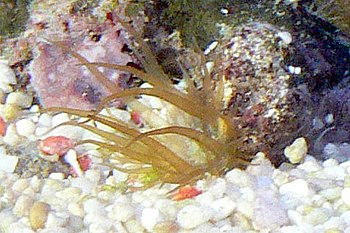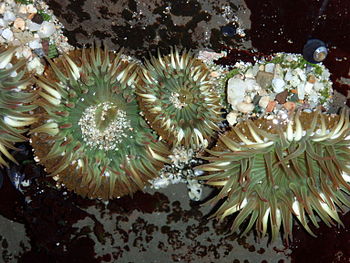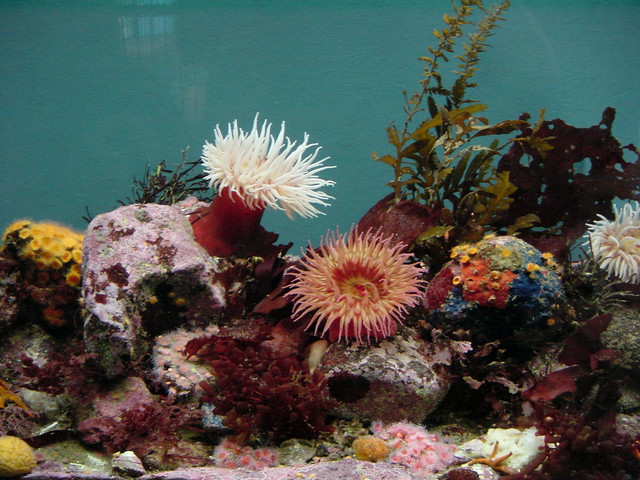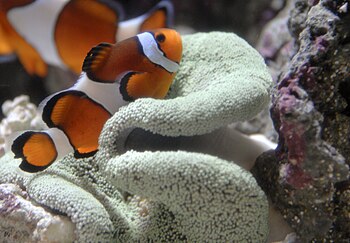 |
| Sabellidae sp. (Feather duster worm) with radioles extended (Photo credit: Wikipedia) |
They are filter feeders and the adults dwell completely throughout their entire lives in the tube unless and until the tube is destroyed or damaged somehow. The young ones feed on planktons which is a typical feature among the phylum Annelida.
The tubes of the worms are either attached to the rocks or are present in the sandy bottom near the shallow waters. The body of the worm is thrown into segments and the whole body is provided with spines which are used for tunnelling while the worm is busy in making the burrow.
The worm is known to make a U-shaped burrow in which it finally lives. The tubes are lined with mucus. The tubes measure 85 cm in length and 4 cm in diameter. The centre of the tube is the widest area. The worm is highly specialized among the polychaetes as the middle segments of the body bear highly specialized parapodia adapted to participate in filter-feeding. The parapodia are large in size and are fan-shaped which are used to create suction and pump water through the tube. The morphology of parapodia is used in the identification of species. The worm feeds by using specialized structures present on the mid-body segments that secrete mucus for trapping the food particles. A flow of water is created by three circular flaps on the three segments that create suction and draws water towards the tube.
They lack any organ capable of detecting light as the worm passes its entire life buried inside the tube. Apart from this sort of habitat few species are known to exhibit bioluminescence. When the worm is disturbed in its burrow it moves away from the point of disturbance and secrets mucus towards the disturbance point which crystallizes and emits bioluminescence of blue colour. Two species of filter-feeding crabs belonging to two different families are known to dwell in the tubes of these worms.
Apart from these two species, a third one is also known to inhabit the worm's tube sometimes. Polyonyx and Pinnixa are most frequently found to dwell in the tube of the parchment worm. They may be present together also. The breeding pairs do not share the tube with crabs and other species of animals. The crabs generally tend to dwell in the tubes and leave the tubes only when disturbed.
|


